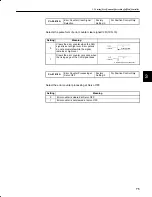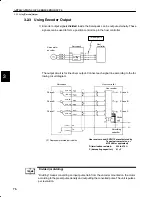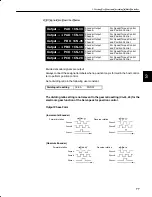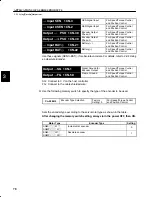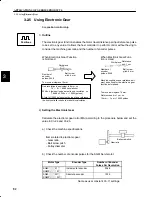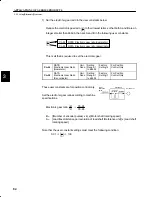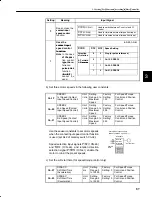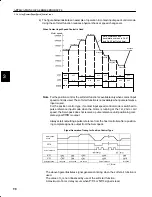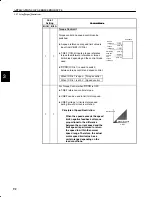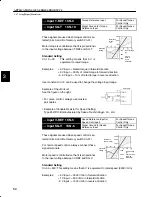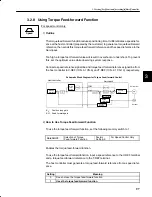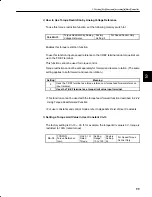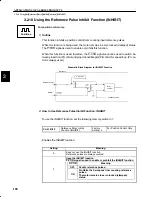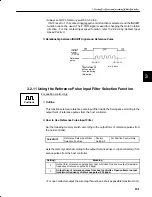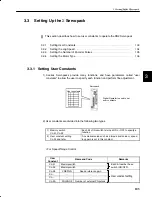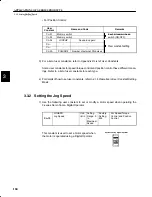
3.2
Setting User Constants According to Host Controller
89
•
For Position Control
:
0: OFF, 1: ON
Contact Signal
User Constant
P-CON
P-CL N-CL
Cn-02
Cn-01
Selected Speed
P-CON
P-CL N-CL
Bit 2
Bit F
p
0
0
0
Stop
−−−−
0
0
1
Pulse reference input
1
Pulse reference input
Direction of
rotation
0
1
1
SPEED (Cn-1F)
rotation
0: Forward
rotation
1
1
1
−−−−
SPEED (Cn-20)
rotation
1: Reverse
rotation
1
0
SPEED (Cn-21)
Preset values (0 or 1) and input signal status in the portions indicated by horizontal
bars (
−
) are optional.
Note
When the contact input speed control function is used, the reference pulse inhibit
function is not available.
b) Standard Setting when Cn-02 bit 2 = 0
Input signals are used as external torque limit input.
Input signal P-CON is used to specify the direction of motor rotation.
→
Input P-CON 1CN-41
Proportional Control, etc.
For Speed/Torque
Control and
Position Control
a) Contact Input Speed Control when Cn-02 bit 2 = 1
Use input signal P-CON to specify the direction of motor rotation.
P-CON
Meaning
1
Reverse rotation
0
Forward rotation
0: OFF (high level), 1: ON (low level)
b) Standard Setting when Cn-02 bit 2 = 0
P-CON signal is used for proportional control, zero-clamp and torque/speed control
changeover.
Note
For the speed/torque control, control by external reference (voltage reference) is
possible when the contact input speed control function is used by setting bits A
and B of user constant Cn-01.
For the position control, control by external reference (pulse reference) is pos-
sible when the contact input speed control function is used by setting bit F of user
constant Cn-01.
3

